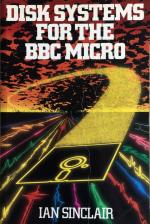
Beebug
 1st April 1984
1st April 1984
Categories: Review: Book
Author: Sheridan Williams
Publisher: Granada
Machine: BBC B/B+/Master 128
Published in Beebug Volume 2 Number 10
Disk Systems For The BBC Micro (Granada)
Ian Sinclair has an easy style and I liked this book very much because of it. This is partly due to Ian's depth of knowledge about the Beeb, and also because with over 40 previous books on electronics and computing, he has a great deal of experience in writing readable material.
If you have not yet decided on a disc system for your Beeb, then this book is much more useful than Tony Latham's because, as the book's title would suggests, several systems are covered. Sinclair describes not only the Acorn DFS but also Watford's and the Pace/AMCOM DFS.
The later chapters are devoted to filing. I was particularly interested in this aspect because I have not yet read a book that covers files in anything but a superficial way. Ian's description of sequential files is clear and understandable. I was also pleased to see some time devoted to random files, and several examples were given explaining their use. To finish the section on files Ian mentions (albeit briefly) Index Sequential files (ISAM files). It is strange that Sinclair seems to miss the point about ISAM files used in his example, by suggesting a serial search through the index file to find the start address for the required record, when if he had stored the start address rather than the record length for each record he would have achieved the same ends without having to read the whole index file serially.
On page 11 Sinclair is describing the various configurations of double/single sided, 40/80 track, double/single sided drives, and says "It's not advisable to use double sided discs if you have a single sided drive, because a single sided drive will not offer the same support to the opposite side." I cannot understand this as there is a felt pressure pad opposite the head, and the discs themselves are of identical construction. For many people who intend to buy a double-sided drive at a later date but currently only have a single sided drive it is most sensible to buy DS discs right from the start, so that they can be used on both sides when the DS drive is later acquired.
Topics covered in the book are:
- About discs and disc systems
- The various disc filing systems and their features.
- *SAVE *LOAD *DUMP *LIST *TYPE *OPT auto-booting.
- Text files and their problems (including Wordwise).
- Disc Utilities and how to use them.
- Basic filing techniques.
- DFS commands.
In conclusion this book is full of good ideas, and contains very few errors, though one consistent error is the use of filenames longer than that permitted on the Acorn DFS.


